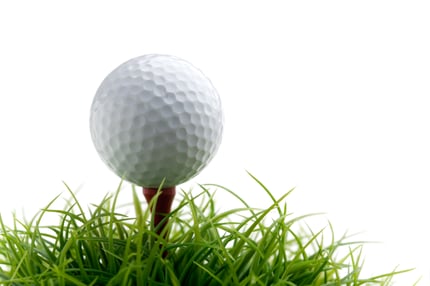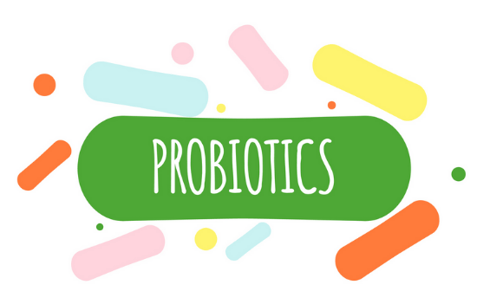 Coenzyme Q10, also known as ubiquinone, is a commonly used supplement by those with cardiovascular risks and disease, and especially those using statins. CoQ10 acts as a carrier in our cells to assist in oxygen utilization. It also assists enzymes in the mitochondria. This allows the production of energy in a cycle referred to as the Krebs Cycle, and hints at why the mitochondria are the “powerhouse of the cell.” Some believe that those with heart failure have a buildup of reactive oxygen species (ROS), which can lead to adverse effects. Furthermore, they suggest CoQ10 antioxidant properties can combat the buildup of ROS. Additionally, CoQ10 is thought to balance calcium-dependent ion channels within the heart, which is critical for heart function. As far as supplementation with statins goes, people are led to believe that supplementing CoQ10 is essential because statins block the pathway that leads to CoQ10 production.
Coenzyme Q10, also known as ubiquinone, is a commonly used supplement by those with cardiovascular risks and disease, and especially those using statins. CoQ10 acts as a carrier in our cells to assist in oxygen utilization. It also assists enzymes in the mitochondria. This allows the production of energy in a cycle referred to as the Krebs Cycle, and hints at why the mitochondria are the “powerhouse of the cell.” Some believe that those with heart failure have a buildup of reactive oxygen species (ROS), which can lead to adverse effects. Furthermore, they suggest CoQ10 antioxidant properties can combat the buildup of ROS. Additionally, CoQ10 is thought to balance calcium-dependent ion channels within the heart, which is critical for heart function. As far as supplementation with statins goes, people are led to believe that supplementing CoQ10 is essential because statins block the pathway that leads to CoQ10 production.
Researchers looked into these claims. Some found many studies that showed CoQ10 had no clear effect on how much blood the heart was able to pump (left heart ejection fraction), and other studies were inconclusive with poor research design. On the other hand, a Large study (a meta-analysis of clinical trials) revealed that those who supplemented CoQ10 had lower risk of death and increased exercise capacity, but no correlation between CoQ10 and how much blood the heart was able to pump. Lastly, another study observed those with heart failure receiving medical therapy. In addition to medical therapy, some of the participants received a placebo and some received Coenzyme Q10. Although the concentration of CoQ10 in the blood serum increased dramatically, those patients saw no greater effect in ejection fraction, peak oxygen consumption, and exercise duration.
Drug Interactions and Additive Effects
CoQ10 has been known to interact with Vitamin K Antagonists, such as warfarin, a commonly prescribed drug in cardiovascular disease cases. Some cases have shown that CoQ10 blocks the anti–blood clotting (aka anticoagulant) effect of Vitamin K Antagonists, especially warfarin, which can lead to fatal blood clotting (according to Lexi-Drugs Online). On the other hand, some studies have shown that CoQ10 has done the complete opposite to Vitamin K Antagonists and actually enhanced the anti-blood-clotting effect, which leads to excessive bleeding.
Side Effects
Some side effects reported include severe gastrointestinal (GI) bleeding, allergic reactions, headaches, vomiting, urine discoloration, and abdominal pain.
Further Research
Much of the research that shows a positive outcome when supplementing CoQ10 had small trial groups (not enough people). The number of participants in the trials, known as sample size, is too small for the evidence to be conclusive. Moving forward, is it possible to get a bigger sample size that can give conclusive results? As of now, many are torn on this topic.
The Clinical Bottom Line
There is not enough evidence to support the use of CoQ10 for treating heart failure or even lessening the risk of muscle weakness (myopathy) in those taking statins. Until more research emerges, I would suggest those with cardiovascular disease not take CoQ10, especially if they are taking a Vitamin K Antagonist. If you are torn about taking CoQ10, consider speaking with your Primary Care Provider and Registered Dietitian to see if it's right for you.
This blog was written by Sabrina Goshen, NIFS Registered Dietitian. To learn more about the NIFS bloggers, click here.


 Looking back on the history of my work in the blog world, I have found that
Looking back on the history of my work in the blog world, I have found that 
 Often I ask my clients or athletes why they exercise. The most common answers that I get from them are “because I want to look better” or “for good health,” which are great reasons for sure. But what if I told you that exercise helps one of the most important organs in your body that doesn’t include any visible muscle:
Often I ask my clients or athletes why they exercise. The most common answers that I get from them are “because I want to look better” or “for good health,” which are great reasons for sure. But what if I told you that exercise helps one of the most important organs in your body that doesn’t include any visible muscle:  Seriously. Stop and take a breath. Don’t judge your technique, just breathe in and out. Failure to do both in and out will likely result in you fainting, and the ERs and urgent care centers have enough to do without you coming in with a cut forehead requiring stitches.
Seriously. Stop and take a breath. Don’t judge your technique, just breathe in and out. Failure to do both in and out will likely result in you fainting, and the ERs and urgent care centers have enough to do without you coming in with a cut forehead requiring stitches. As many of us are confronted with the decision of whether to send our children back to school or continue with online learning, we are faced with many questions that we had never had to ask ourselves before. Breakfast, lunch, and often snacks are mainly consumed during these hours at school, so as we continue to see Indiana trying to return to normal and reopen, we might need to tailor our eating habits to ensure we are not risking unnecessary exposure to COVID-19 when refueling our bodies throughout the day. These ideas also work for adults who are returning to the workplace or have already returned to the workplace.
As many of us are confronted with the decision of whether to send our children back to school or continue with online learning, we are faced with many questions that we had never had to ask ourselves before. Breakfast, lunch, and often snacks are mainly consumed during these hours at school, so as we continue to see Indiana trying to return to normal and reopen, we might need to tailor our eating habits to ensure we are not risking unnecessary exposure to COVID-19 when refueling our bodies throughout the day. These ideas also work for adults who are returning to the workplace or have already returned to the workplace. The uncertainty of the last few months has taken a toll both mentally and physically on everyone. Many people did not have access to gyms and instead did at-home bodyweight workouts or
The uncertainty of the last few months has taken a toll both mentally and physically on everyone. Many people did not have access to gyms and instead did at-home bodyweight workouts or  Last time
Last time “Take a probiotic; it helps with your gut.” We have all heard it from friends, doctors, and Registered Dietitians. Is it really that simple, though? It is no secret that probiotics really do help with a variety of gastrointestinal (GI) issues. However, did you know that there are specific strains of probiotics that help with specific symptoms, and while one strain may help with one GI symptom, it may not help with another? Not all probiotics are created equal, and not all supplements labeled “probiotic” will yield health benefits.
“Take a probiotic; it helps with your gut.” We have all heard it from friends, doctors, and Registered Dietitians. Is it really that simple, though? It is no secret that probiotics really do help with a variety of gastrointestinal (GI) issues. However, did you know that there are specific strains of probiotics that help with specific symptoms, and while one strain may help with one GI symptom, it may not help with another? Not all probiotics are created equal, and not all supplements labeled “probiotic” will yield health benefits. Dietary supplement usage is reaching an all-time high. The
Dietary supplement usage is reaching an all-time high. The  For whatever reason, there seems to be this notion in the fitness industry that if the workout doesn’t leave you on the ground gasping for air, it really wasn’t a good one. Or maybe that you didn’t work hard enough because you didn’t go running to the nearest trash can by the end. This could not be further from the truth; but unfortunately this way of thinking still seems to run rampant.
For whatever reason, there seems to be this notion in the fitness industry that if the workout doesn’t leave you on the ground gasping for air, it really wasn’t a good one. Or maybe that you didn’t work hard enough because you didn’t go running to the nearest trash can by the end. This could not be further from the truth; but unfortunately this way of thinking still seems to run rampant.